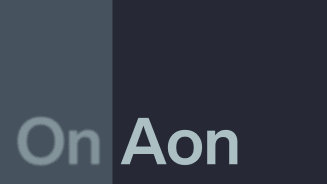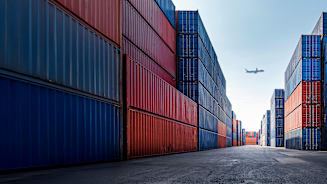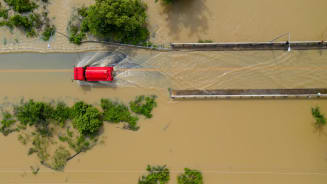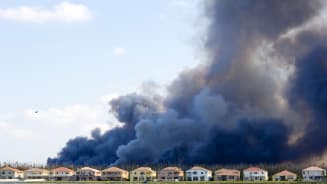5 Steps for Successful Carbon Accounting Verification

Organizations can demonstrate their commitment to global sustainability and a low-carbon future by addressing verification challenges and adopting best practices.
Key Takeaways
-
Carbon accounting verification can help to ensure accurate emissions data, enhancing trust for shareholders and lenders and minimizing legal penalties. However, there are challenges in data collection and consistency.
-
Reliable verification requires adhering to standards and selecting qualified bodies for credible results.
-
For successful carbon accounting verification, organizations should implement robust data management, follow standardized methodologies, engage qualified bodies, foster internal expertise and view verification as an ongoing process for continuous improvement.
Carbon accounting is becoming an important tool for organizations to measure and manage their greenhouse gas (GHG) emissions. This process involves quantifying the amount of carbon dioxide (CO₂) and other GHGs emitted into the atmosphere due to an organization's operations. For example, mandatory climate reporting now exists in Australia and New Zealand, in addition to other hubs across Asia like Singapore. Hong Kong and Japan are also considering similar regulations in the coming years.
The carbon accounting assessment process involves confirming business goals, collecting and quantifying emissions data, setting targets, establishing reduction goals, formalizing a strategy and reviewing emissions annually.
Do Verified Carbon Accounting Practices Really Matter?
It is crucial to ensure that carbon measurements are credible and accurate. The auditable emissions carbon accounting verification process can help to ensure that the data is compliant with regulatory standards, such as ISO 14064, thus helping organizations to reduce regulatory risk.
Investors are increasingly prioritizing environmental, social and governance factors in their decision making. Independent carbon accounting verification can help organizations to reduce their environmental impact by identifying improvement areas and providing recommendations for better carbon management practices. By demonstrating commitment to transparency and sustainability, companies can enhance investor confidence and build a positive reputation among consumers, shareholders, employees, and other stakeholders.
Effective carbon accounting verification can also promote collaboration within the supply chain. By working with suppliers to verify emissions, companies can encourage best practices such as engaging suppliers in adopting energy-efficient practices and reducing emissions. This leads to a more sustainable supply chain and more accurate and comprehensive reporting of emissions data across the supply chain.
Challenges in Carbon Accounting Verification
While carbon accounting verification is important, it is not without its challenges.
- Ensuring high-quality data is critical but can be difficult due to the complexity of data sources and potential inaccuracies in data collection. Calculating indirect emissions from sources outside a company's direct control, such as suppliers and product usage (Scope 3 emissions), can be particularly complex and requires extensive data collection.1
- Different organizations may use varying methodologies for carbon accounting, making it essential to standardize verification practices. Additionally, smaller organizations may lack the resources and expertise needed for thorough carbon accounting and verification.
- Regulatory requirements for carbon reporting and verification can also vary across regions, adding complexity to the process for multinational companies.
By addressing these challenges, companies can improve the accuracy and credibility of their carbon accounting, ultimately supporting their sustainability goals and reducing their environmental impact.
5 Best Practices for Successful Verification
- Implement robust data management systems. Invest in comprehensive systems to streamline data collection, storage and reporting, ensuring accuracy and consistency.
- Adhere to standardized methodologies. Follow standardized carbon accounting methodologies, such as the Greenhouse Gas Protocol, for consistent and comparable emissions reporting.
- Engage qualified verification bodies. Select experienced and accredited verification bodies with a strong track record for reliable and credible results.
- Foster internal expertise. Build internal expertise in carbon accounting and verification to effectively manage emissions data and engage with verification bodies.
- Seek continuous improvement. Treat carbon accounting verification as an ongoing process and strive for continuous improvement in data management and reporting practices.
General Disclaimer
This document is not intended to address any specific situation or to provide legal, regulatory, financial, or other advice. While care has been taken in the production of this document, Aon does not warrant, represent or guarantee the accuracy, adequacy, completeness or fitness for any purpose of the document or any part of it and can accept no liability for any loss incurred in any way by any person who may rely on it. Any recipient shall be responsible for the use to which it puts this document. This document has been compiled using information available to us up to its date of publication and is subject to any qualifications made in the document.
Terms of Use
The contents herein may not be reproduced, reused, reprinted or redistributed without the expressed written consent of Aon, unless otherwise authorized by Aon. To use information contained herein, please write to our team.
Aon's Better Being Podcast
Our Better Being podcast series, hosted by Aon Chief Wellbeing Officer Rachel Fellowes, explores wellbeing strategies and resilience. This season we cover human sustainability, kindness in the workplace, how to measure wellbeing, managing grief and more.
Aon Insights Series Asia
Expert Views on Today's Risk Capital and Human Capital Issues
Aon Insights Series Pacific
Expert Views on Today's Risk Capital and Human Capital Issues
Aon Insights Series UK
Expert Views on Today's Risk Capital and Human Capital Issues
Client Trends 2025
Better Decisions Across Interconnected Risk and People Issues.
Construction and Infrastructure
The construction industry is under pressure from interconnected risks and notable macroeconomic developments. Learn how your organization can benefit from construction insurance and risk management.
Cyber Labs
Stay in the loop on today's most pressing cyber security matters.
Cyber Resilience
Our Cyber Resilience collection gives you access to Aon’s latest insights on the evolving landscape of cyber threats and risk mitigation measures. Reach out to our experts to discuss how to make the right decisions to strengthen your organization’s cyber resilience.
Employee Wellbeing
Our Employee Wellbeing collection gives you access to the latest insights from Aon's human capital team. You can also reach out to the team at any time for assistance with your employee wellbeing needs.
Environmental, Social and Governance Insights
Explore Aon's latest environmental social and governance (ESG) insights.
Q4 2023 Global Insurance Market Insights
Our Global Insurance Market Insights highlight insurance market trends across pricing, capacity, underwriting, limits, deductibles and coverages.
Regional Results
How do the top risks on business leaders’ minds differ by region and how can these risks be mitigated? Explore the regional results to learn more.
Human Capital Analytics
Our Human Capital Analytics collection gives you access to the latest insights from Aon's human capital team. Contact us to learn how Aon’s analytics capabilities helps organizations make better workforce decisions.
Insights for HR
Explore our hand-picked insights for human resources professionals.
Workforce
Our Workforce Collection provides access to the latest insights from Aon’s Human Capital team on topics ranging from health and benefits, retirement and talent practices. You can reach out to our team at any time to learn how we can help address emerging workforce challenges.
Mergers and Acquisitions
Our Mergers and Acquisitions (M&A) collection gives you access to the latest insights from Aon's thought leaders to help dealmakers make better decisions. Explore our latest insights and reach out to the team at any time for assistance with transaction challenges and opportunities.
Navigating Volatility
How do businesses navigate their way through new forms of volatility and make decisions that protect and grow their organizations?
Parametric Insurance
Our Parametric Insurance Collection provides ways your organization can benefit from this simple, straightforward and fast-paying risk transfer solution. Reach out to learn how we can help you make better decisions to manage your catastrophe exposures and near-term volatility.
Pay Transparency and Equity
Our Pay Transparency and Equity collection gives you access to the latest insights from Aon's human capital team on topics ranging from pay equity to diversity, equity and inclusion. Contact us to learn how we can help your organization address these issues.
Property Risk Management
Forecasters are predicting an extremely active 2024 Atlantic hurricane season. Take measures to build resilience to mitigate risk for hurricane-prone properties.
Technology
Our Technology Collection provides access to the latest insights from Aon's thought leaders on navigating the evolving risks and opportunities of technology. Reach out to the team to learn how we can help you use technology to make better decisions for the future.
Top 10 Global Risks
Trade, technology, weather and workforce stability are the central forces in today’s risk landscape.
Trade
Our Trade Collection gives you access to the latest insights from Aon's thought leaders on navigating the evolving risks and opportunities for international business. Reach out to our team to understand how to make better decisions around macro trends and why they matter to businesses.
Weather
With a changing climate, organizations in all sectors will need to protect their people and physical assets, reduce their carbon footprint, and invest in new solutions to thrive. Our Weather Collection provides you with critical insights to be prepared.
Workforce Resilience
Our Workforce Resilience collection gives you access to the latest insights from Aon's Human Capital team. You can reach out to the team at any time for questions about how we can assess gaps and help build a more resilience workforce.
More Like This
-

Article 6 mins
3 Rules to Help Elevate Your Business Continuity Strategy
Half of the world’s top economic loss events impacted the U.S. in 2024. As natural catastrophes continue to grow in frequency and severity, enhancing a business continuity strategy helps ensure organizations are prepared for the unexpected.
-

Article 18 mins
Q1 2025: Global Insurance Market Overview
The insurance market at the start of 2025 has been a welcome source of stability. With a few notable exceptions, buyer-friendly conditions continued in Q1. Other notable trends include:
-

Article 12 mins
A Targeted Strategy to Mitigate Rising U.S. Health Costs
While medical and pharmacy expenses continue to consume benefit budgets, employers can adopt effective cost-saving strategies that combine predictive analytics with innovative solutions to help control healthcare spend over a multi-year period.























































































































































